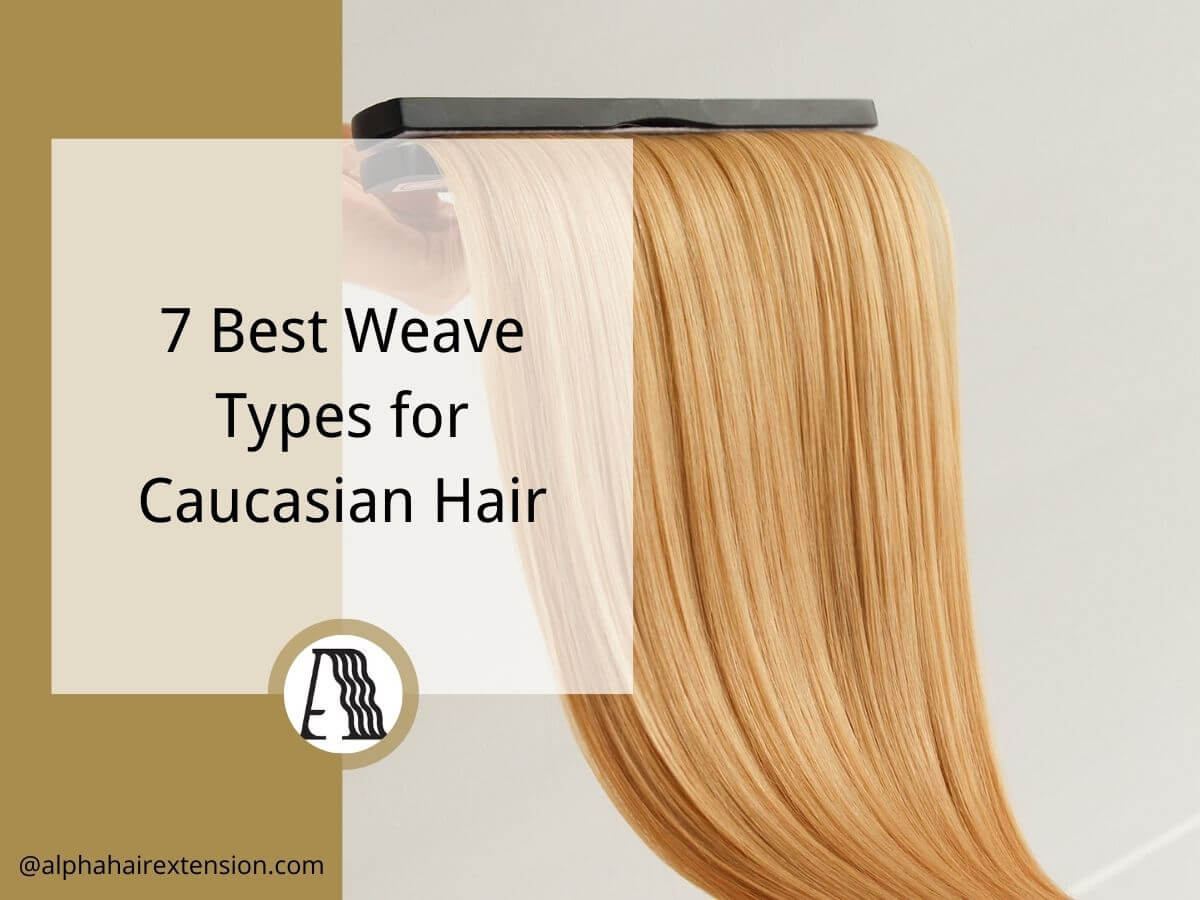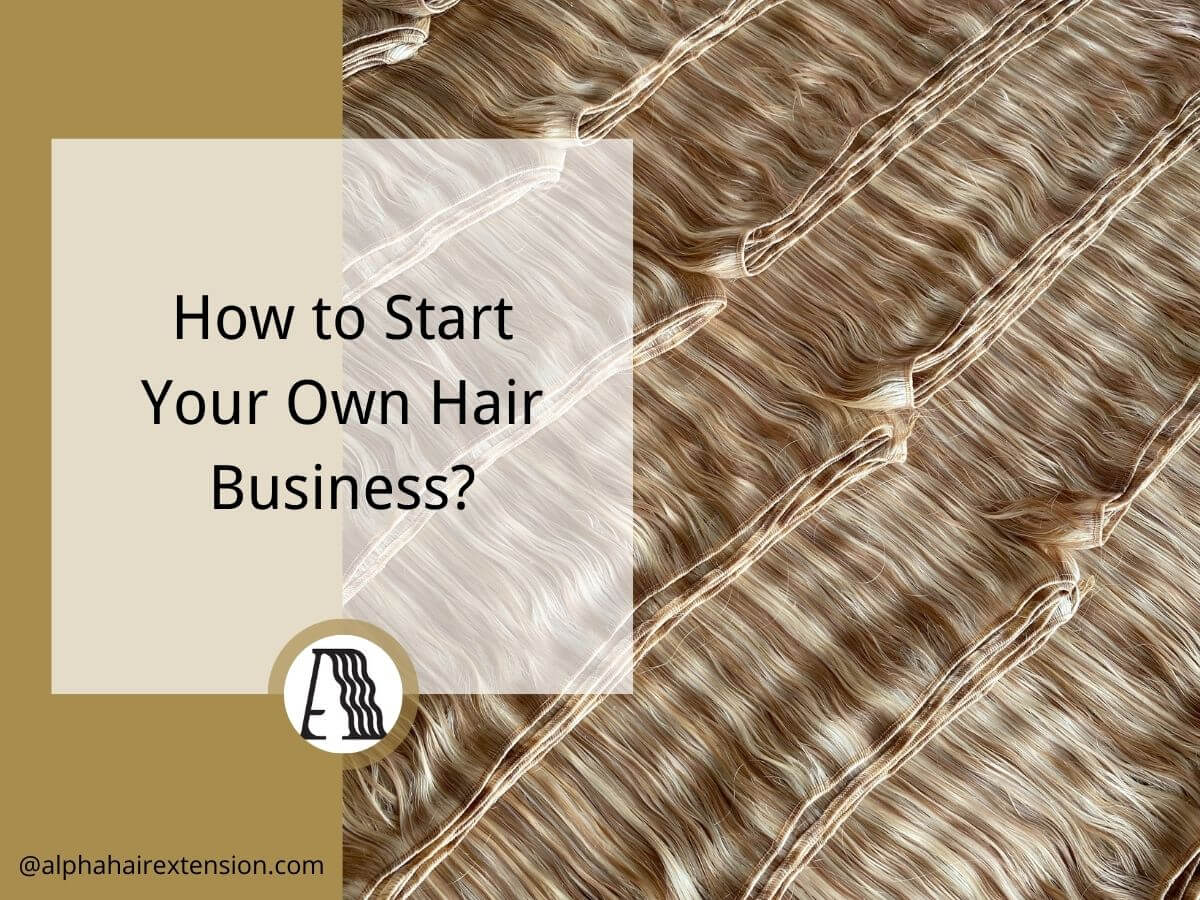I remember the first time I ordered a batch of hair extensions for my store. The product photos looked great, but when they arrived, the quality was disappointing. Some strands were rough, others shed immediately, and the color was off. I lost money and trust with my customers.
That experience taught me a valuable lesson—quality isn’t just about how hair looks in a picture. It’s about durability, texture, and how well it holds up after use.
I’ve spent years sourcing hair extensions for businesses like yours. Through trial and error, I’ve learned how to spot high-quality hair before making a purchase.
Inside this guide, you’ll learn:
- What makes hair extensions high-quality (and what doesn’t).
- How to test extensions before you buy.
- Mistakes that cause shedding, tangling, and breakage.
By the end, you’ll have the knowledge to make smarter investing decisions.
So, let’s get started!
1. What is Hair Extension
Have you ever had a customer ask for longer, fuller hair but didn’t want to wait months for it to grow? Thats where hair extensions comes in. It is artificial or natural hair strands added to a person’s existing hair to create length, volume, or a specific style. They are widely used in salons, retail stores, and by professional hairstylists to enhance hairstyles instantly.
The Purpose of Hair Extensions in the Beauty Industry
Hair extensions aren’t just about aesthetics—they’re about versatility and confidence. They let customers:
- Add length and volume instantly
- Experiment with new styles without damaging their natural hair
- Correct hair concerns like thinning or uneven growth
Key Features of Hair Extensions
Not all hair extensions are the same. Here’s what you should know before stocking or recommending them:
- Material Type – Extensions come in human hair and synthetic hair, each with different durability and styling options.
- Application Method – Various methods such as clip-ins, tape-ins, sew-ins, and fusion cater to different customer needs.
- Hair Quality – Features like Remy vs. non-Remy hair, cuticle alignment, and processing treatments determine longevity and performance.
2. Types of Hair Extension
When I first started sourcing hair extensions, I was overwhelmed by the different types available. Some looked great but didn’t last, while others were more expensive but worth every penny. Knowing the differences can help you choose the right products for your business.
Here are some common types:
Clip-In Extensions
Clip-in extensions are a temporary, reusable option that customers can install themselves. They attach with small clips and provide instant volume and length without professional application. These are high-demand retail products, ideal for beauty supply stores, e-commerce businesses, and salons selling take-home extensions.
Why Stock Clip-In Extensions?
- Strong retail opportunity due to DIY ease.
- Reusable, increasing customer lifetime value.
- Low-maintenance, making them attractive for first-time buyers.
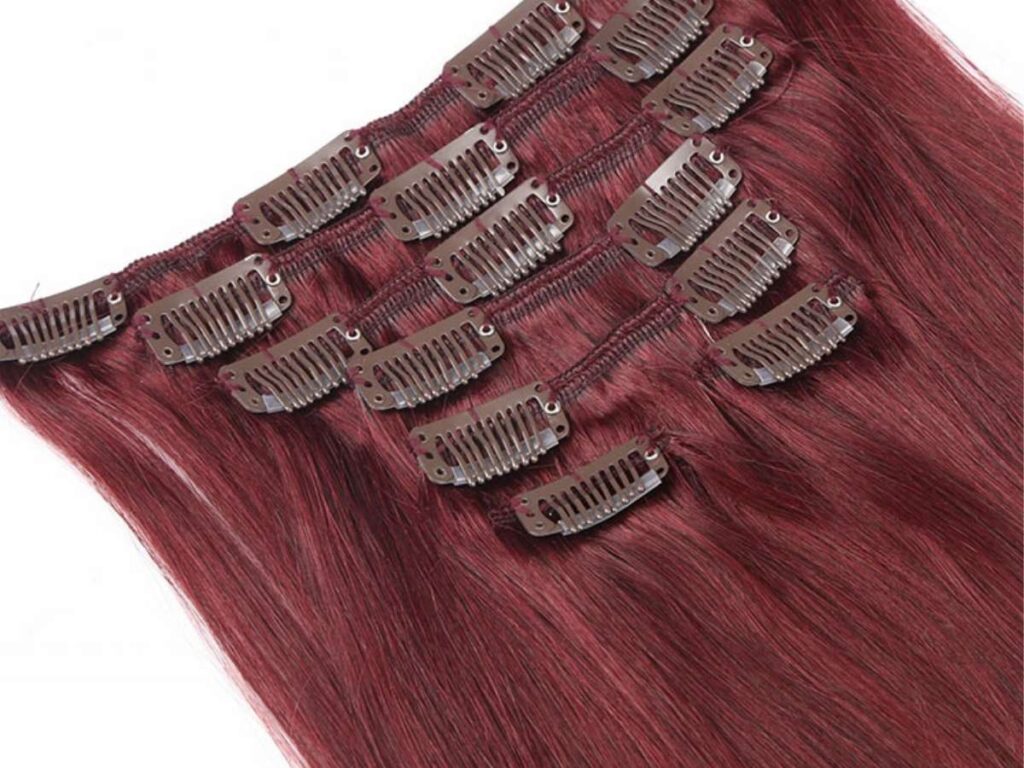
Tape-In Extensions
Tape-in extensions use thin adhesive wefts that blend seamlessly into natural hair. They last six to eight weeks and require professional installation and removal, making them a high-retention service for salons.
Why Offer Tape-In Extensions?
- Fast application (30-60 minutes), allowing stylists to book multiple clients per day.
- Encourages repeat visits for maintenance and reapplication.
- Lightweight and discreet, suitable for various hair types.
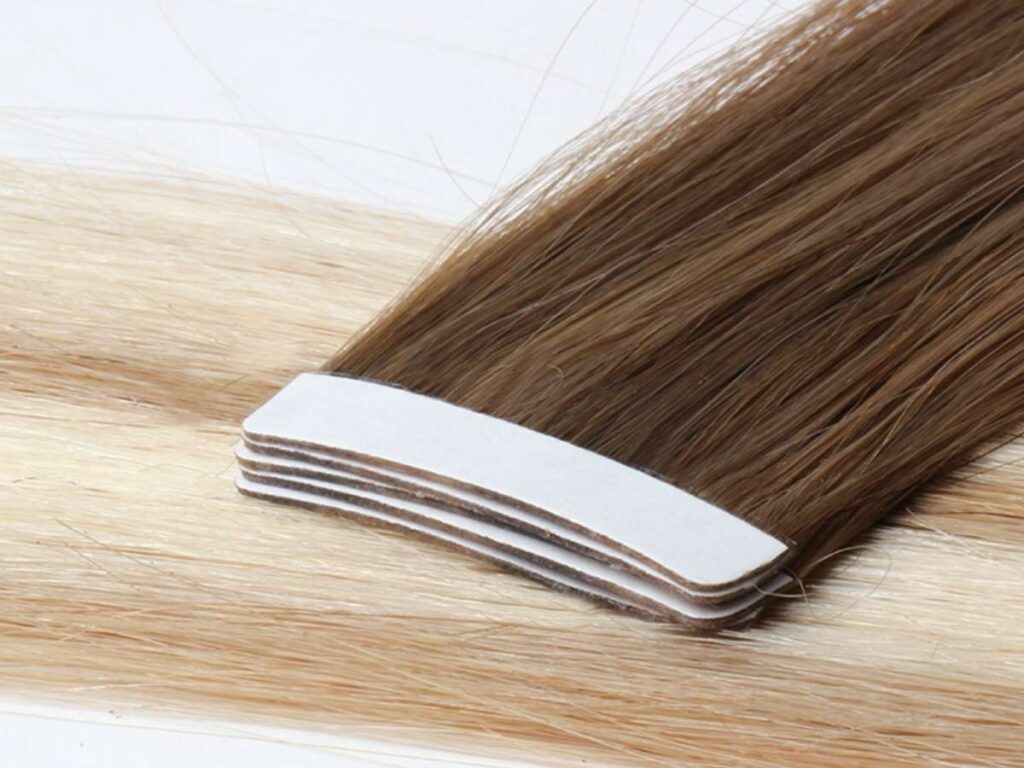
Fusion and Keratin Bond Extensions
Fusion extensions attach strand by strand using keratin glue and heat bonding. They provide the most natural and durable results, lasting three to five months with professional care. Since they require expert installation and removal, they are an upscale salon service with a high price point.
Why Offer Fusion Extensions?
- Premium service with higher profit margins.
- Attracts long-term clients seeking natural-looking results.
- Encourages repeat customer visits for maintenance and adjustments.
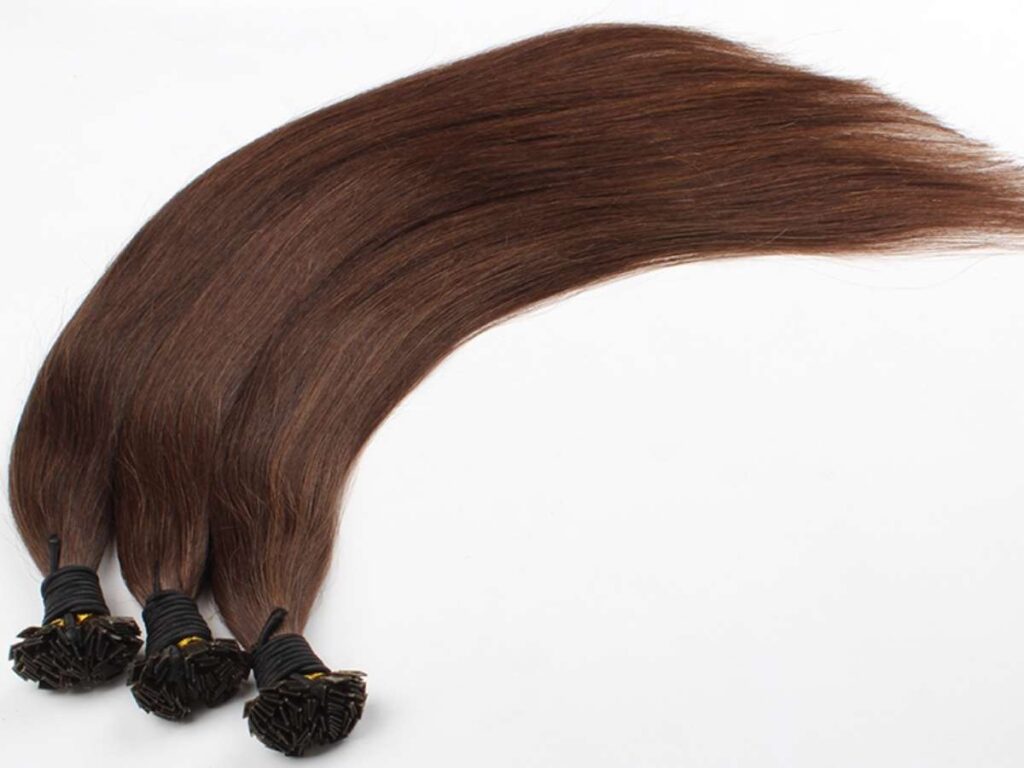
Micro Link Extensions
Micro link (also called micro bead or I-tip) extensions attach using small metal beads, eliminating the need for adhesives or heat. With proper maintenance, they can last several months, making them an attractive option for stylists and extension specialists.
Why Offer Micro Link Extensions?
- No glue or heat, reducing potential hair damage.
- Provides long-term wear, maintaning repeat maintenance bookings.
- Flexible and customizable, appealing to stylists and salon professionals.
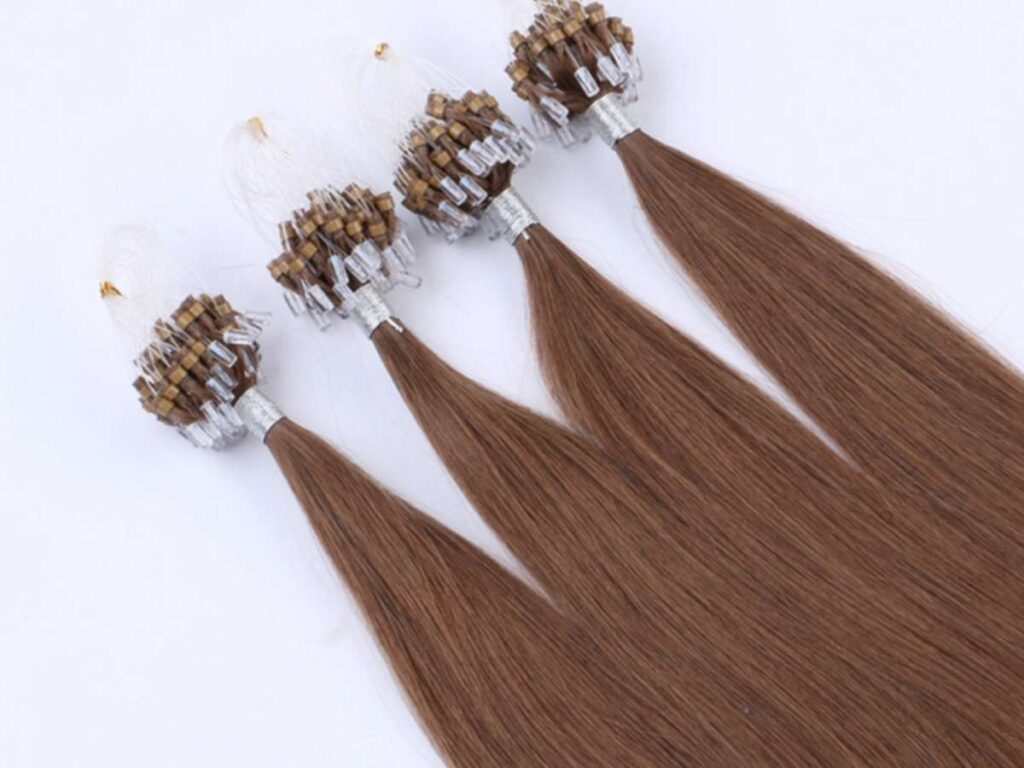
3. Signs of High-Quality Hair Extensions
Poor-quality extensions lead to customer complaints, refund requests, and damaged business reputation. High-quality hair, on the other hand, increases repeat purchases, customer trust, and long-term profitability.
Here’s how to evaluate hair extensions before adding them to your inventory:
100% Remy Hair with Intact Cuticles
Not all human hair extensions are the same. Remy hair is the gold standard because the cuticles remain intact and aligned in the same direction, reducing tangling and matting.
What to check:
- Ask if the hair is 100% Remy—non-Remy hair is often mixed with low-quality strands.
- Perform a root-to-tip check—cuticles should run in the same direction.
- Avoid hair that feels overly processed, as this weakens the strands over time.
Minimal Shedding and Tangling
Low-quality hair extensions start shedding and tangling almost immediately. Poor construction or over-processed hair can lead to customer dissatisfaction and lost sales.
What to check:
- Run fingers through the hair—high-quality hair should stay intact.
- Brush multiple times—if if excessive strands fall out, the wefts are poorly secured.
- Wet hair and detangle—tangling indicates poor cuticle alignment or over-processing.
Natural Appearance and Feel
Customers expect extensions that blend seamlessly with their natural hair. Low-quality hair often looks overly shiny due to silicone coatings that wash off after a few uses, making the hair dry and brittle.
What to check:
- Soft, natural texture—high-quality extensions mimic real hair movement.
- Consistent thickness—thin, thin or uneven ends signal poor-quality sourcing.
- No artificial shine—excess glossiness may indicate chemical coatings.
4. Signs of Poor-Quality Hair Extensions
Identifying poor-quality hair before purchasing can save you from unnecessary losses and dissatisfied customers.
Here’s what to watch out for when evaluating hair extensions:
Excessive Shedding and Weak Wefts
One of the biggest complaints about low-quality hair extensions is shedding. Weakly secured hair strands or poorly constructed wefts cause hair to fall out quickly, leading to frustrated customers and shorter product lifespan.
Warning signs:
- Running fingers through the hair results in shedding.
- Weft stitching looks loose or uneven.
- Tape-in adhesive is weak or peels off too easily.
Hair extensions should stay intact even after brushing, washing, and styling. If they start shedding immediately, they won’t last.
Tangling and Matting
Hair that constantly tangles is a sign of low-quality cuticle alignment or over-processing. Non-Remy hair (where cuticles face different directions) is especially prone to tangling because it lacks the smooth outer layer that keeps strands from knotting together.
Warning signs:
- Hair bunches up or knots after light brushing.
- Tangling worsens after washing or heat styling.
- Hair feels dry and stiff rather than smooth and soft.
If extensions don’t remain tangle-free with normal use, your customers will quickly lose confidence in your product.
Over-Processed or Chemically Treated Hair
Some suppliers use acid baths or silicone coatings to make low-grade hair look smooth and silky. While it may feel nice initially, these treatments wash away within a few wears, leaving the hair dry, brittle, and lifeless.
Warning signs:
- Hair has an unnatural, plastic-like shine.
- After a few washes, the hair becomes rough and dull.
- Color appears overly uniform, a sign of heavy chemical processing.
High-quality human hair retains its natural softness and shine without needing artificial coatings.
Thin, Uneven Ends
Premium hair extensions maintain consistent thickness from root to tip. Lower-grade hair often has thin, scraggly ends, indicating that shorter hairs were mixed in to cut costs. These extensions look unnatural and need frequent trimming, reducing their usable length.
Warning signs:
- Ends appear frayed or too thin compared to the top.
- Hair extensions feel too light for their advertised density.
- Hair length appears inconsistent when spread out.
Customers expect full-bodied hair that blends seamlessly. If the extensions are thicker at the top but sparse at the ends, they won’t meet professional standards.
5. Installation Methods of Hair Extensions
As a business owner, knowing the different installation methods for hair extensions helps you guide your customers toward the best options for their needs. Whether you sell to salons, stylists, or retailers, understanding these methods ensures that you stock the right products and offer expert recommendations.
Here’s a breakdown of the most common professional and DIY installation methods used in the industry.
Clip-In Extensions – Best for Quick & Temporary Use
Clip-in extensions are a non-permanent option designed for easy application. Customers can attach and remove them within minutes, making them ideal for retail and e-commerce businesses targeting DIY users.
Installation Process:
- Small clips are attached to the weft of the hair.
- The wearer sections their natural hair and secures the clips at the roots.
- The process takes 5 to 10 minutes and requires no tools or adhesives.
Best for:
- Retail & e-commerce – Strong demand for DIY-friendly products.
- Businesses selling take-home hair extensions.
Tape-In Extensions – A Salon-Exclusive Semi-Permanent Option
Tape-in extensions feature thin adhesive wefts that are attached by pressing sections of natural hair between two extension pieces. This method blends seamlessly and lasts 6 to 8 weeks before needing reapplication.
Installation Process:
- Hair is parted into thin sections.
- Tape-in wefts are placed near the roots and pressed together for a secure hold.
- Installation takes 30 to 60 minutes and requires a stylist.
Best for:
- Businesses offering semi-permanent extension services.
Fusion & Keratin Bond Extensions – Premium, Long-Term Wear
Fusion extensions attach strand by strand using keratin glue and heat bonding. They offer the most natural-looking results and can last 3 to 5 months with proper maintenance.
Installation Process:
- Small sections of extension hair are bonded to natural hair using keratin glue.
- Heat is applied to seal the bond, securing the extension in place.
- Application takes 3 to 6 hours and requires a professional.
Best for:
- High-end businessess catering to long-term extension clients.
Micro Link Extensions – No Glue or Heat Required
Micro link extensions (also called micro bead or I-tip extensions) use small metal beads to attach extension strands to natural hair. This method is less damaging since it does not require heat or glue, and it allows for reuse with proper maintenance.
Installation Process:
- A small bead is placed on a section of natural hair.
- The extension strand is threaded through the bead and clamped shut with pliers.
- Installation takes 2 to 4 hours and requires professional expertise.
Best for:
- Businesses offer reusable, semi-permanent extension services.
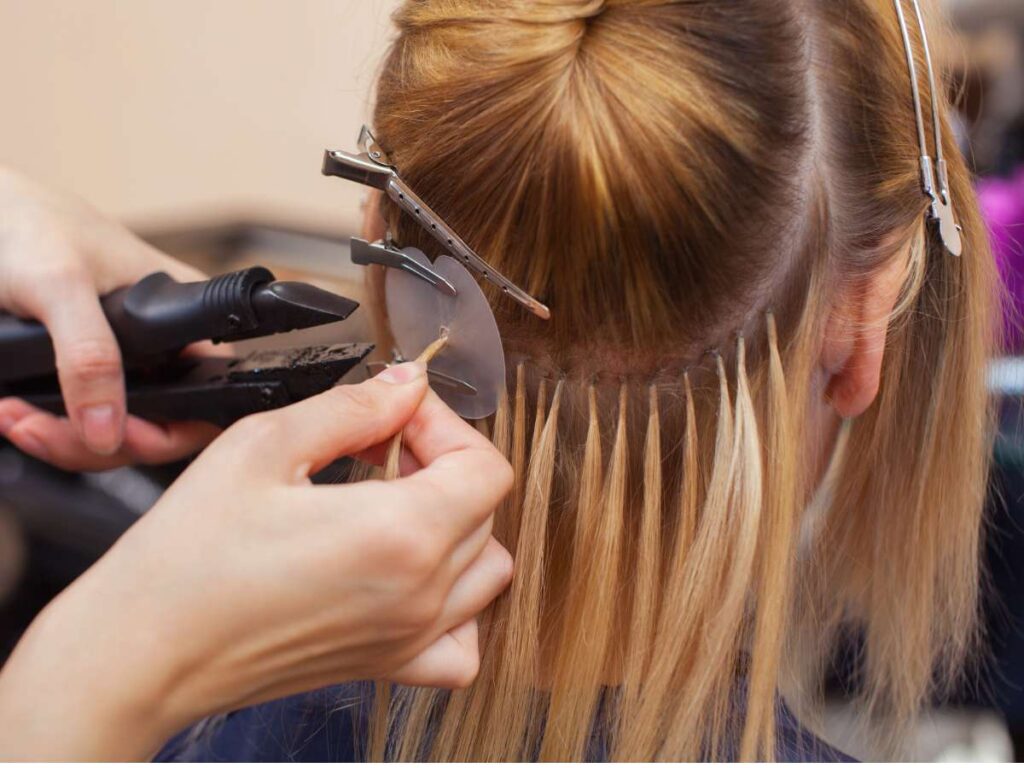
6. Best Practices for Hair Extension Maintenance
The way you store and handle hair extensions affects their quality, shelf life, and resale value. Poor storage can lead to dryness, tangling, shedding, and even product returns, all of which impact your bottom line. Proper inventory management ensures that your stock remains in perfect condition, reducing waste and maximizing profitability.
Here’s how to maintain hair extensions while they are in stock to preserve quality and prevent losses.
Store Hair Extensions in a Controlled Environment
Hair extensions—especially human hair—can dry out, absorb moisture, or become tangled if stored improperly.
Best practices for storage:
- Keep extensions in a cool, dry area, away from humidity and direct sunlight.
- Use sealed plastic bags or silk-lined storage cases to prevent frizz and tangling.
- Avoid stacking heavy products on top of hair extensions to prevent weft bending or flattening.
For warehouses & distributors: Use climate-controlled storage to preserve hair texture.
For retailers: Display sample pieces but keep bulk inventory protected in original packaging.
Prevent Tangling & Shedding Before Selling
If extensions are poorly stored or handled, they can tangle, shed, or lose shape—resulting in customer complaints and product waste.
How to keep hair smooth & tangle-free:
- Brush extensions before packaging or display using a loop brush.
- Keep clip-ins & tape-ins laid flat rather than folded to maintain alignment.
- For bundled hair, secure with a gentle band instead of tight elastics that can create creases.
For salons selling take-home extensions: Offer pre-brushed, well-packaged sets to enhance customer satisfaction.
For e-commerce & retailers: Ship extensions in tangle-free packaging to prevent returns.
Keep Track of Product Shelf Life
While high-quality human hair extensions can last for years when stored properly, over-processed or synthetic hair can degrade over time. Maintaining a first-in, first-out (FIFO) inventory system prevents old stock from becoming unsellable.
Inventory management tips:
- Rotate stock regularly—sell older inventory first to avoid product deterioration.
- Label packaging with dates of arrival and batch numbers for easy tracking.
- Conduct monthly quality checks to remove any compromised products before they reach customers.
For distributors: Implement batch tracking for consistent quality control.
Avoid Excessive Handling to Maintain Quality
Frequent handling of extensions—whether for display or customer inspection—can cause frizz, dryness, or contamination.
How to minimize damage while showcasing products:
- Use sample pieces for customer testing instead of opening new packs.
- Train staff to handle extensions with clean hands and gentle brushing.
- Keep hair sealed until purchase to prevent unnecessary exposure to dust or moisture.
For salons: Store unused inventory separately from working products to maintain quality.
For beauty supply stores: Use protective covers for display samples to reduce contamination.
Conclusion
The success of your hair extension business isn’t just about the products you sell—it’s about how well you maintain them before they reach your customers. The right storage, handling, and tracking methods can make all the difference.
I’ve made the mistake of losing money on damaged stock before I learned how to protect my inventory. Now, I know how to preserve quality.
Your business deserves the best. Make the changes today and see the difference in your bottom line.
Are you ready to improve your storage system?
Let’s talk. Contact us now!
Explore More of Our Resources
There’s more to explore! Check out our additional product selections to find exactly what you’re looking for:
Still haven’t found what you’re looking for? Don’t hesitate to contact us. We’re available around the clock to assist you.


